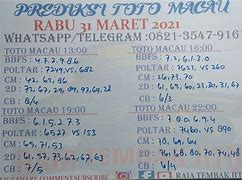
Sitka — The Outside Edge of the Inside Passage Wildlife Viewing
Humpback whales feed in the waters off-shore. A volcano is visible through the mist of a summer morning. Marine mammals are broadcast live on the radio. A strong and vibrant connection to two cultures – Tlingit and Russian – is visible in dances, storytelling, historic architecture and beautiful artwork. A wind-swept island hosts hundreds of thousands of nesting seabirds each summer. All this awaits you in Sitka, perched on the outside edge of the Inside Passage. Look for marine mammals and sea birds on the waters of Sitka Sound. Stroll amid the historic buildings of downtown Sitka, keeping your eyes open for a bald eagle soaring overhead or a sea lion splashing in the harbor. Venture away from town to explore the trails and scenic overlooks. Whatever you decide, settle in for a few days to experience all that Sitka has to offer. We’ve included some of our favorite wildlife viewing sites to get you started, but there’s much more for those with a keen eye and a healthy spirit of discovery. For information on tours and lodging, consult the Sitka Convention and Visitors Bureau. Visit their website at www.sitka.org or call 907-747-5940.
Sudah Tahu Cara Main Higgs Domino di PC?
Bermain Higgs Domino di PC bisa menjadi pilihan yang menyenangkan, terutama jika kamu lebih suka menggunakan layar yang lebih besar daripada smartphone. Dengan panduan di atas, kamu dapat dengan mudah menikmati semua keseruan Higgs Domino langsung dari komputer kamu.
Ikuti langkah-langkah yang telah dijelaskan di atas, dan kamu dapat dengan gampang memulai memainkan domino kamu di PC. Nah, kamu butuh bantuan top up Higgs Domino? Tidak perlu khawatir karena Saldo Game menawarkan layanan top up untuk Chip Ungu MD dan Chip Kuning Higgs Domino.
Dengan top up ini, kamu bisa mendapatkan lebih banyak chip untuk meningkatkan performa kamu dalam permainan. Bayangkan betapa serunya bermain Higgs Domino dengan chip yang lebih banyak!
Cara top up Higgs Domino juga termasuk gampang kok. Jadi, tunggu apa lagi? Segera buat akun di SaldoGame.com dan mulailah menikmati berbagai keuntungan yang kami tawarkan.
Dengan memiliki akun di SaldoGame.com, kamu akan memiliki akses ke semua voucher game dan layanan top up kami. Jadi, jangan ragu lagi, buatlah akun sekarang dan rasakan sensasi gaming yang lebih seru bersama SaldoGame.com!
1. Apakah saya perlu membayar untuk menggunakan Bluestacks atau emulator lainnya?
Bluestacks sendiri gratis untuk digunakan, tetapi terdapat versi berbayar dengan fitur tambahan. Namun, kamu dapat mengunduh dan menggunakan versi gratis untuk memainkan Higgs Domino.
2. Bisakah saya menggunakan emulator lain selain Bluestacks?
Ya, ada banyak emulator Android lainnya seperti NoxPlayer, LDPlayer, atau Memu yang dapat kamu gunakan untuk memainkan Higgs Domino di PC.
3. Apakah saya perlu koneksi internet untuk memainkan Higgs Domino di PC?
Ya, kamu memerlukan koneksi internet yang stabil untuk memainkan Higgs Domino, sama seperti ketika kamu memainkannya di smartphone.
Sitka Wildlife Viewing Sites
Sockeye salmon are the most economically important species of salmon in Alaska.
Sockeye salmon are one of the smaller species of Pacific salmon, measuring 18 to 31inches in length and weighing 4-15 pounds. Sea-going sockeye salmon have iridescent silver flanks, a white belly, and a metallic green-blue top, giving them their "blueback" name. Some fine black speckling may occur on the back, but large spots are absent. Sockeye salmon are prized for their firm, bright-orange flesh.
As sockeye salmon return upriver to their spawning grounds, their bodies turn brilliant red and their heads take on a greenish color, hence their other common name, “red” salmon. Breeding-age males develop a humped back and hooked jaws filled with tiny, visible teeth. Juveniles, while in fresh water, have dark, oval parr marks on their sides. These parr marks are short-less than the diameter of the eye-and rarely extend below the lateral line.
Like all species of Pacific salmon, sockeye salmon are anadromous, living in the ocean but entering fresh water to spawn. Sockeye salmon spend one to four years in fresh water and one to three years in the ocean.
In Alaska, most sockeye salmon return to spawn in June and July in freshwater drainages that contain one or more lakes. Spawning itself usually occurs in rivers, streams, and upwelling areas along lake beaches. During this time 2,000 – 5,000 eggs are deposited in one or more “redds”, which the female digs with her tail over several days time. Males and females both die within a few weeks after spawning.
Eggs hatch during the winter, and the young “alevins” remain in the gravel, living off their yolk sacs. In the spring. they emerge from the gravel as “fry” and move to rearing areas. In systems with lakes, juveniles usually spend one to three years in fresh water, feeding on zooplankton and small crustaceans, before migrating to the ocean in the spring as “smolts”. However, in systems without lakes, many juveniles migrate to the ocean soon after emerging from the gravel.
Smolts weigh only a few ounces upon entering salt water, but they grow quickly during their 1-3 years in the ocean, feeding on plankton, insects, small crustaceans, and occasionally squid and small fish. Alaska sockeye salmon travel thousands of miles during this time, drifting in the counter-clockwise current of the Alaska Gyre in the Gulf of Alaska. Eventually they return to spawn in the same freshwater system where they were hatched.
Fresh water lakes, streams and estuaries provide important habitat for spawning and rearing sockeye salmon. On the west coast of North America, sockeye salmon range from the Klamath River in Oregon to Point Hope in northwestern Alaska.
The largest sockeye salmon populations are in the Kvichak, Naknek, Ugashik, Egegik, and Nushagak Rivers that flow into Alaska’s Bristol Bay, plus the Fraser River system in Canada. In good years, these runs can number in the tens of millions of fish.
Cara Main Higgs Domino di PC Dengan Emulator
Permainan Higgs Domino Island menyajikan beragam jenis permainan kartu, termasuk kartu remi, gaple, serta tambahan game baru seperti catur, ular tangga, ludo, dan slot King Of Olympus.
Meskipun awalnya hanya tersedia untuk perangkat mobile, kemajuan teknologi telah memungkinkan untuk memainkan game ini di komputer atau laptop. Nah, untuk main Higgs Domino di PC, kamu memerlukan yang namanya emulator.
Emulator adalah software yang memungkinkan pengguna untuk menjalankan sistem operasi Android dan aplikasi Android di dalam lingkungan yang disimulasikan di komputer pribadi (PC) atau laptop.
Dengan menggunakan emulator Android, pengguna dapat mengakses dan menjalankan aplikasi Android langsung dari layar komputer mereka, mirip dengan cara pengguna menggunakan perangkat Android seperti smartphone atau tablet.
Berikut adalah beberapa cara main Higgs Domino di PC:
Bluestacks merupakan salah satu emulator Android untuk komputer yang sedang populer saat ini dan telah banyak digunakan. Emulator ini dianggap stabil dan jarang mengalami bug. Hampir semua aplikasi dan permainan Android dapat diinstal dan digunakan dengan lancar di Bluestacks.
Bluestacks dapat memanfaatkan hardware komputer dengan baik untuk mendukung pengguna dalam menjalankan setiap aplikasi. Hal ini juga berlaku untuk bermain Higgs Domino.
Untuk memainkan Higgs Domino di komputer menggunakan Bluestacks, langkah-langkahnya sebagai berikut:
Cara bermain Higgs Domino di PC Android selanjutnya adalah dengan menggunakan NoxPlayer, sebuah emulator alternatif yang dapat digunakan jika kamu tidak cocok atau tidak dapat menggunakan Bluestacks.
NoxPlayer memiliki beberapa keunggulan, salah satunya adalah mendukung penggunaan multi-simulator yang memungkinkan pengguna untuk membuka lebih dari satu aplikasi secara bersamaan. Dengan NoxPlayer, pengguna dapat memainkan dua game sekaligus dalam satu waktu.
Selain itu, NoxPlayer juga selalu diperbarui sesuai dengan perkembangan versi Android terbaru, memberikan dukungan yang sangat baik terutama bagi pemain game Higgs Domino. Berikut adalah langkah-langkah untuk bermain game Higgs Domino menggunakan NoxPlayer:
Salah satu opsi emulator lain yang bisa dipertimbangkan adalah MEmu Play. Emulator ini juga cukup populer di antara pengguna PC yang ingin menjalankan aplikasi Android. MEmu Play sering dipilih karena aplikasinya ringan dan tidak membebani komputer.
MEmu Play bahkan dapat berjalan lancar di PC dengan RAM hanya 2 GB, asalkan tidak ada banyak program berjalan secara bersamaan dan semua sources dialokasikan sepenuhnya untuk emulator ini.
Selain efisiensi penggunaan memori, MEmu Play juga terkenal sebagai emulator yang stabil dan aman dari serangan virus. Pengalaman bermain game di emulator ini pun biasanya nyaman. Berikut adalah langkah-langkah untuk memainkan Higgs Domino di PC menggunakan MEmu Play:
Cara mudah beli dan top up Chip Ungu MD dan Chip kuning higgs domino. Proses instan 24 jam termurah dengan pambayaran dana, ovo, qris dan pulsa loh!
Volunteer in Schools Programs
Commercial, Sport, Subsistence, and Personal Use Fishing
Partners & Links to Outside Sites / Resources
Higgs Domino adalah salah satu permainan domino online yang sangat populer di kalangan penggemar permainan kartu. Bermain Higgs Domino di smartphone mungkin sudah biasa bagi sebagian besar orang, tetapi tahukah kamu bahwa kamu juga bisa memainkannya di PC?
Nah, kamu dapat menikmati semua keseruan Higgs Domino langsung dari layar komputer kamu loh! Artikel ini akan membahas beberapa cara mudah untuk memainkan Higgs Domino di PC, termasuk emulator yang digunakan, spesifikasi minimal yang diperlukan, dan tutorial untuk mengunduh Higgs Domino dari emulator.
Conservation and Education
Status, Trends, and Threats
Pacific salmon species on the west coast of the lower 48 United States have experienced dramatic declines in abundance during the past several decades as a result of several factors, including water diversions for agriculture and flood control; loss of habitat due to hydropower, resource extraction and development; and direct mortality from entrainment by hydropower projects. As a result, two lower-48 populations of sockeye salmon have been listed under the Endangered Species Act.
For the time being, salmon habitat in Alaska remains mostly pristine. There are hundreds of stocks of sockeye salmon throughout the state of Alaska and their population trends are diverse: Some stocks are in decline while others are at equilibrium or increasing. Potential future threats include habitat loss, habitat degradation, climate change, and over fishing.
Sockeye salmon are the most economically important salmon in Alaska. More pink salmon are caught, but sockeye salmon are a higher quality fish and sell for a much higher price.
The largest harvest of sockeye salmon in the world occurs in the Bristol Bay area of southwestern Alaska where 10 million to more than 30 million sockeye salmon may be caught each year during a short, intensive fishery lasting only a few weeks. Relatively large harvests of one million to six million sockeye salmon are also taken in Cook Inlet, Prince William Sound, and Chignik Lagoon. All commercial Pacific salmon fisheries in Alaska are under a limited entry system which restricts the number of vessels allowed to participate. Most sockeye salmon are harvested with gillnets either drifted from a vessel or set with one end on the shore, some are captured with purse seines, and a relatively small number are caught with troll gear in the southeastern portion of the state.
Subsistence users harvest sockeye salmon in many areas of the state. The greatest subsistence harvest of sockeye salmon probably occurs in the Bristol Bay area where participants use set gillnets. In other areas of the state, sockeye salmon may be taken for subsistence use in fishwheels. Most of the subsistence harvest consists of prespawning sockeye salmon, but a relatively small number of postspawning sockeye salmon are also taken.
There is also a growing sport fishery for sockeye salmon throughout the state. Probably the best known sport fisheries with the greatest participation occur during the return of sockeye salmon to the Kenai River and one of its tributaries the Russian River on the Kenai Peninsula. Other popular areas include the Kasilof River on the Kenai Peninsula as well as the various river systems within Bristol Bay and Kodiak Island. Sockeye are highly prized by sport anglers for their tenacious fighting ability as well as food quality.
Personal use fisheries have also been established to make use of any sockeye salmon surplus to spawning needs, subsistence uses, and commercial and sport harvests. Personal use fisheries have occurred in Bristol Bay, where participants use set gillnets, as well as in Cook Inlet and Prince William Sound, where participants also use dip nets.
In the summer, there are many opportunities to view spawning sockeye salmon in the wild, providing a boon to Alaska’s growing tourism industry.
Sockeye salmon are the preferred species for canning due to the rich orange-red color of their flesh. Today, however, more than half of the sockeye salmon catch is sold frozen rather than canned. Canned sockeye salmon is marketed primarily in the United Kingdom and the United States while most frozen sockeye salmon is purchased by Japan. Sockeye salmon roe is also valuable. It is salted and marketed in Japan.
The Alaska State Constitution establishes, as state policy, the development and use of replenishable resources, in accordance with the principle of sustained yield, for the maximum benefit of the people of the state. In order to implement this policy for the fisheries resources of the state, the Alaska Legislature created the Alaska Board of Fisheries (BOF) and the Alaska Department of Fish and Game (ADF&G).
The BOF was given the responsibility to establish regulations guiding the conservation and development of the state’s fisheries resources, including the distribution of benefits among subsistence, commercial, recreational, and personal uses. The ADF&G was given the responsibility to implement the BOF’s regulations and management plans through the scientific management of the state’s fisheries resources. Scientific and technical advice is also provided by the ADF&G to the BOF during its rule-making process. The separation of rule-making and inseason management responsibilities between these two entities is generally regarded as contributing to the success of Alaska’s fisheries management system.
The ADF&G’s fishery management activities fall into two categories: inseason management and applied science. For inseason management, the department deploys a cadre of fishery managers near the fisheries. These individuals have broad authority to open and close fisheries based on their professional judgment, the most current biological data from field projects, and fishery performance.
Research biologists and other specialists conduct applied research in close cooperation with the fishery managers. The purpose of the division’s research shop is to ensure that the management of Alaska’s fisheries resources is conducted in accordance with the sustained yield principle and that managers have the technical support they need to ensure that fisheries are managed according to sound scientific principles and utilizing the best available biological data.
A variety of research is conducted each year throughout the state that explores topics such has stock and harvest assessment, population dynamics, genetic stock identification, and stock assessment technologies. Such projects are often conducted in collaboration with university, federal and international institutions. The results of these works are peer-reviewed and presented as written articles as well as presented at scientific conferences and meetings throughout the world.
Alaska Department of Fish and Game
304 Lake Street, Room 103 Sitka, AK 99835-7671
Commercial Fisheries Information Phone (907) 747-6688 FAX (907) 747-6239
Hunting, Trapping, and Wildlife-related Information Phone (907) 747-5449 FAX (907) 747-6239
Sport Fishing Information Phone (907) 747-5355 FAX (907) 747-6239
Recorded Message Phone (907) 747-5022























